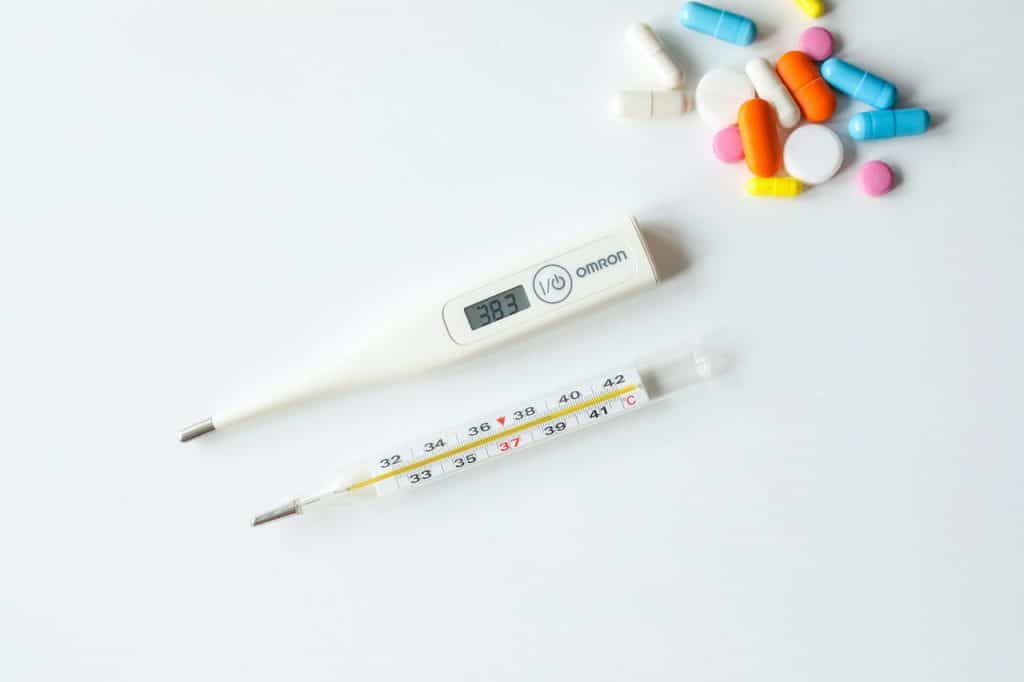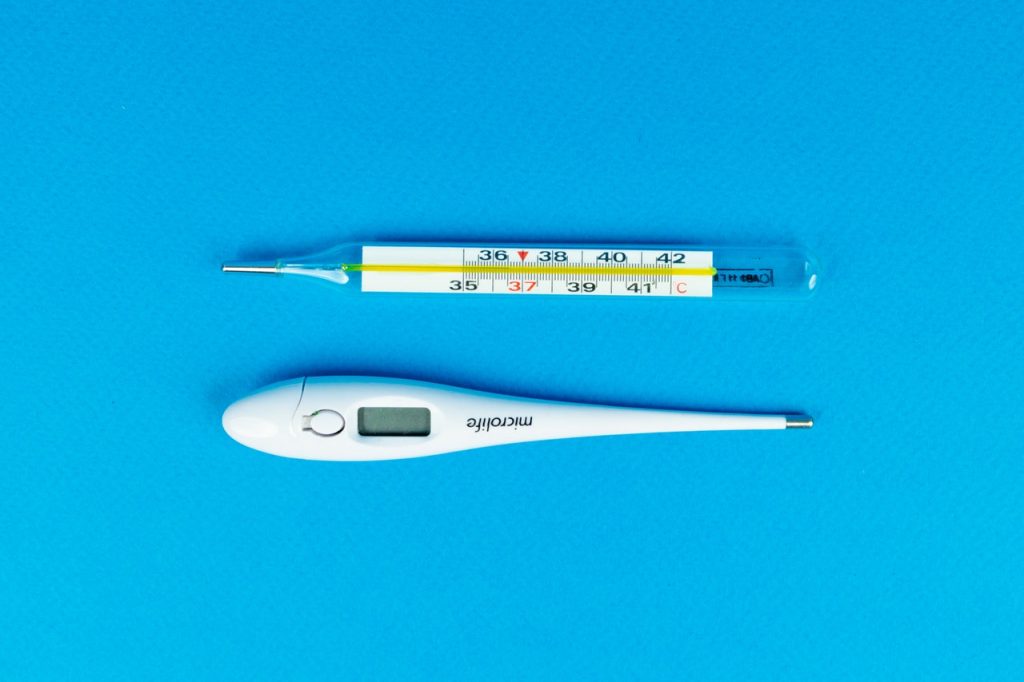Now more than ever, people are becoming understandably conscious about their health. However, sometimes you may become paranoid the moment someone starts getting a little warmer than usual. Although fever, also known as pyrexia, is a common symptom of many ailments, it has variations. Low-grade fever can be a sign of completely different conditions from a high-grade fever.
But what is a low-grade fever?
Understanding low-grade fevers is just as important to your personal safety as much as ensuring your workplace is virus-free.
Here is a comprehensive guide on low-grade fever, its potential causes and assorted fever symptoms.
What is a Low-Grade Fever?

A fever is the unusual rise of body temperature in someone, and it can be symptom of more serious underlying conditions. Someone’s normal body temperature depends on many factors, such as their age. The average normal body temperature hovers at approximately 98.6 Fahrenheit or 37 Celsius. But that could vary according to their age.
For infants and children, their normal body temperature can be anywhere between 97.9 Fahrenheit (36.6 Celsius) and 99 Fahrenheit (37.2 Celsius).
For adults, the normal body temperature range is between 97 Fahrenheit (36.1 Celsius) and 99 Fahrenheit (37.2 Celsius).
A rise in this temperature is a fever, but there’s a difference between a low-grade fever and a high-grade fever.
A low-grade fever is characterized by a slight rise in body temperature. Experts determine that a fever is a low-grade if it’s between 99.5 Fahrenheit (37.5 Celsius) and 100.3 Fahrenheit (38.3 Celsius). A fever higher than these temperatures considered high-grade.
So what causes it and what symptoms accompany a low-grade fever?
What are the Symptoms of Low-Grade Fever?

Identifying the symptoms can be just as important as knowing the causes of low-grade fever.
- Elevated temperature in the given range, namely between 99.5 Fahrenheit (37.5 Celsius) and 100.3 Fahrenheit (38.3 Celsius)
- Flushed and warm skin, particularly in the face
- Shivering and shaking due to chills
- Muscle fatigue or aching muscles
- Light sweating and clamminess
- Decrease in appetite and energy in general
What Other Symptoms Can Accompany a Low-Grade Fever?

A low-grade fever is often accompanied by plenty of other symptoms. The diseases and conditions that are the causes it can be infectious or not.
For example, drug detoxification can cause low-grade fevers and other symptoms. Aside from the aforementioned signs, here are other symptoms that may accompany this degree of fever.
Symptoms of Infection
If your low-grade fever is caused by an infection, it may be accompanied by other symptoms such as the following:
- Gastrointestinal infections may cause abdominal cramps and abdominal pain alongside your fever. It may also present with uncontrollable bowel movement or diarrhea.
- If your infection originates from your urinary tract, you may experience a burning sensation when you urinate, alongside frequent urination.
- Respiratory infections can manifest with a cough, whether wet or dry, alongside sore throat and shortness of breath.
- Other infections may cause aches to specific areas of your body. For example, joint aches and headaches may present with infections associated with these areas. An ear infection can present with low-grade fever as well as an earache.
- Other signs of infections may include a rash on the skin or tenderness on your skin.
Serious Symptoms
Some people make the mistake of basing their treatments and assessment purely on body temperature. However, low-grade fevers can be accompanied by other symptoms that can signal a serious and life-threatening disease.
If you or someone you know presents with the following symptoms with or without a low-grade fever, you should call emergency services immediately.
- Any change in mental state such as experiencing hallucinations, getting delirious, serious and prolonged bouts of lethargy and intense confusion.
- Cardiac problems such as an elevated heart rate, also known as tachycardia.
- Any problems and unusual activity in the chest area. These include tightness around the chest, feeling pain in the chest cavity, increased pressure eon the chest and heart palpitations.
- Respiratory symptoms such as having difficulty breathing properly, wheezing and rasping when breathing, or shortness of breath.
- Alarming digestive tract issues such as prolonged vomiting or diarrhea, vomiting with blood, bleeding from the rectal area or passing stool with blood.
- Any seizure, no matter how mild seeming, and any severe body pain.
What are Common Causes of Low-Grade Fever?

It’s important to know are the most common causes for a low-grade fever. Some of these conditions stem from infectious diseases such as viruses, bacteria and parasites. Other causes of low-grade fever stem from non-infectious conditions like chronic ailments and similar diseases. Identifying its symptoms associated with these infectious and non-infectious causes is also important.
Infectious Causes for Low-Grade Fever
The infectious cases for a low-grade fever are varied. Some of them are viral in nature, while others stem from parasites or bacteria. They all cause fever because they are foreign organism invading your body, triggering your body’s immune response.
Infectious causes of low-grade fever can be categorized into the following.
- Among children, low-grade fever can be the symptom of contracting diseases associated with younger people such as measles, chickenpox and the mumps.
- Its also the most common symptom of flu and other flu-like diseases, although the more serious flu viruses causes high-grade fevers later on.
- Parasitic infections such as Lyme disease and diseases from rabbit ticks and worms can cause low-grade fevers.
- Site-specific infections can still trigger a fever. For example, a urinary tract infection is just as likely to cause a temperature increase as an ear infection or a sinus infection.
- Lung infections are notorious causes, alongside more serious symptoms, like shortness of breath. Infections of this caliber include pneumonia, tuberculosis and bronchitis.
Non-Infectious Causes for Low-Grade Fever
Not every low-grade fever develops because of an infection or a foreign body invading your systems. Sometimes, you develop a low-grade fever when your body goes haywire; it’s your body’s response to a non-infectious underlying condition.
These conditions can include the following conditions and diseases.
- Persistent low-grade fever can accompany several cancers as the body fights itself or falls apart due to the treatment. These cancers include cancer of blood, or leukemia, and cancer of the lymph glands, or lymphoma, which disrupts the immune system.
- You may develop fever symptoms as a response to vaccination. This is entirely normal for some vaccines as they train your immune system to fight off invaders. Check with the physician who administered the immunization if fever is a normal side-effect.
- Vasculitis or the inflammation of your veins and arteries can kick your immune system into overdrive and produce a fever response. It can also be a symptom of another disease.
- Any disorder that cripples your immune system or makes it go haywire will lead to a low-grade fever as your body produces antibodies and shifts into fighting gear.
- Your can experience a low-grade fever because of your medication for another condition entirely. Once again, such symptoms may be normal for the medication. Clarify with your doctor beforehand. It can also be a sign that you should switch your health supplements as soon as possible.
Any of these conditions, infectious or not, can become serious quickly. Sometimes they may even escalate while your temperature remains only slightly elevated. If any symptoms become life-threatening or unbearable, you should seek emergency services immediately.
What are Treatments for Low-Grade Fever?

If your low-grade fever does not present with other life-threatening or serious symptoms, you can manage and treat this condition easily at home. Fever medicine is readily available over the counter.
Here are some ways you can treat low-grade fever effectively at home.
- Make sure anyone with the fever is properly quarantined if the cause is determined to be contagious. This will prevent the fever form spreading throughout the household.
- Give them plenty of fluid and electrolyte-rich liquid. Water and sports drinks are perfect for this.
- Ensure the patient is getting plenty of rest and avoiding heavy exertion such as intense physical labor and mental distress.
- Get over the counter medication such as ibuprofen, aspirin and paracetamol and take the appropriate dosage. You should check with a medical professional before administering these medications to children or infants.
A low-grade fever is a common symptom, but that doesn’t mean it’s not caused by something more serious. However, you shouldn’t panic the moment you or someone you know has a slightly elevated temperature. Keep close watch on anyone with this fever and monitor their symptoms before reaching out to medical professionals. In doing so, you will help avoid clogging emergency services and gain some peace of mind.




